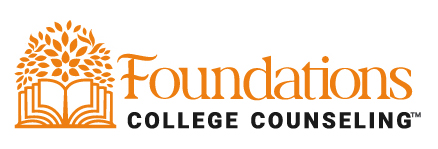For many middle class families, paying for college is a real struggle. Although we try to prepare families to brace themselves for what the FAFSA says they should be able to pay, it’s still a shock for most families we work with, particularly those with net family incomes in the $100-200K range. It’s not at all uncommon to see Expected Family Contributions (EFCs) well over $20,000 for families in this income range, and, well, many families really can’t afford to contribute that much to college every year.
A common myth among families in this tough financial position is that state schools are the way to go– that they’re a better value and cheaper across the board. While that can sometimes certainly be the case, in many instances, private colleges can be significantly more affordable. Let’s look at a real-life case of one of our current students as an example.
Our student is Robin Banks, a name which is obviously a pseudonym and was chosen by the student himself in consenting to be the subject of this blog. (We support this artistic decision and are grateful it wasn’t worse.)
Robin Banks is a strong-performing senior in the Midwest interested in pursuing video game design as a major. Lucky for him, there are lots of great game design programs in his area. After months of due diligence researching and visiting schools, young Mr. Banks decided to apply to three colleges that met his criteria and that he felt good about after visiting:
- School A- a large, public in-state university (cost of attendance: about $24,000)
- School B- a mid-sized private university one state over (cost of attendance: about $53,000)
- School C- a small private university a few hours away (cost of attendance: about $47,000)
To most families, School A would be the obvious top choice right off the bat. It’s clearly so much more affordable, right?
But here’s the rub. For students with a high EFC, that can leave them having to pay full price at state schools. And that was the case for Robin Banks. He received two small merit scholarships from School A and was left with an out-of-pocket expense of more than $21,000 per year.
Schools B and C are both private colleges that are very good but not highly selective, elite institutions with waiting lists around the block. They know they need to appeal to students despite the high sticker price. Enter merit awards. At School B, Robin was awarded $22,000 in merit awards right off the bat, and School C followed with almost $25,000 in merit awards. The playing field was quickly leveling between the three schools.
With our help, Robin appealed to the financial aid offices of School B and School C, laying out his situation openly, honestly, and with documentation to prove he needed additional aid to be able to attend. BOTH colleges increased his financial aid award by several thousand dollars.
In the end, this is the breakdown of what the ACTUAL costs have come out to be:
- School A (the large public in-state school)- $22,000
- School B (the mid-size private school)- $19,000
- School C (the small private school)- $13,500
And just like that, School C emerged as the financial winner, by a lot. Robin will still need to take out Federal Student Loans to help his parents cover the costs, but it will be manageable both for him and his folks. And because he did the work to be sure he was applying to strong-fit schools from the beginning, Robin knows School C will be a place where he will thrive.
By working with a college counselor and being both diligent and realistic about his search, Robin Banks won’t have to be…wait for it… robbin’ banks to afford an excellent college education.

